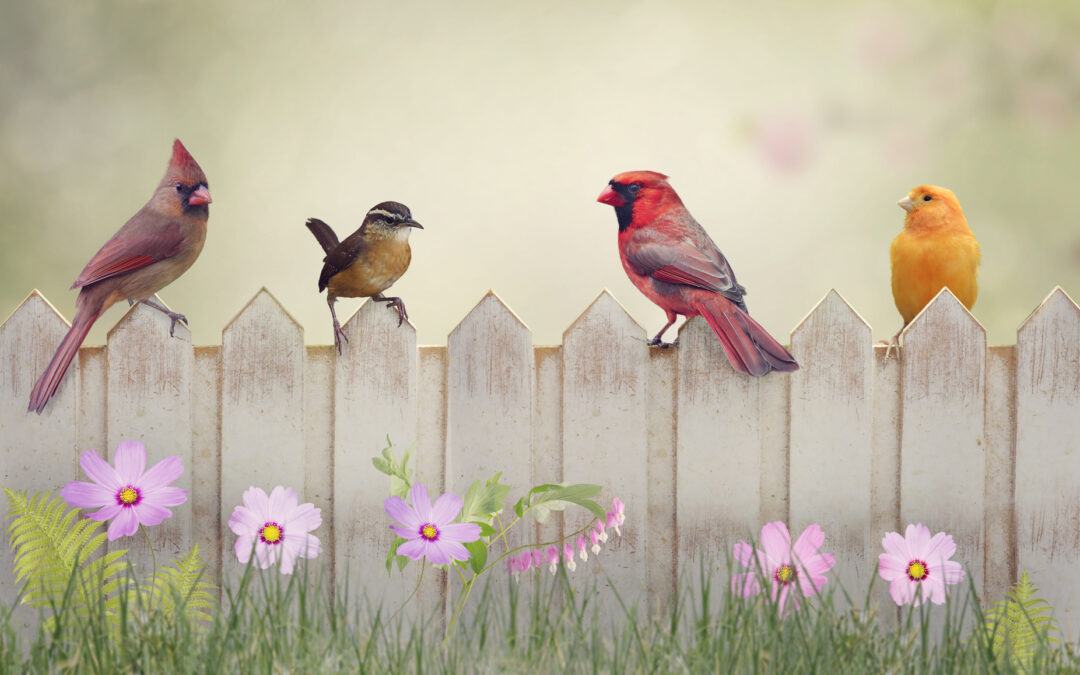==================
A Caveat and Affiliates
First off, a little caveat: within my articles you will find affiliate links, meaning if you buy them, I get a small commission. Your cost is not affected. In addition, I am an Amazon Associate and I earn from qualifying purchases on Amazon.
And yes, if I say that I recommend a product here, it means I truly believe it is a good product. I refuse to recommend any product that I have not researched and believe to be a good value.
Even better, I provide you with a very clear picture of the product, it’s use, and the probable value.
Earning your trust is important to me. I run this website myself and the commissions and donations help support the site.
Sound reasonable and fair enough? Let’s continue to the article.
==================
Wondering how to attract birds to your garden? These simple tips will help you keep them coming back to your landscape!
One of the integral parts of any landscape’s beauty is the fascinating wildlife that lives in it. That includes colorful songbirds like wrens, nuthatches, swallows, and more fluttering through it. In fact, birds are a must for any backyard. Besides adding beauty to your landscape, these colorful birds also provide natural insect control as well as an educational opportunity for your kids.

how to attract birds to your garden
But how to attract birds to your garden?
Well, attracting birds to your garden is a simple task. All you need to draw a variety of birds to your yard is to provide them with a few basics like shelter, food, and water. If your garden has a feeder, birdbath, and nesting box, you can spend hours watching colorful birds and being entertained by their antics.
Here is how to attract birds to your yard!
How to Attract Birds to Your Garden?
Follow these tips to make your landscape a stunning bird-watching destination:
· Find a Bird-Friendly Corner
Finding a bird-friendly part of your landscape is crucial in attracting birds to your garden. You will want to set up feeders, birdbaths, food, shelter, and other offerings there. Also, choose a corner where you can watch birds from your home.
Additionally, when picking a perfect bird-friendly spot in your garden, keep in mind that there should be enough greenery and cover nearby so that your feather friends feel safe to explore. It is also pertinent to highlight that some bird species are territorial, so space your bird food and shelters to attract more birds to your garden.
· Plant a Diverse Landscape
Attracting birds to your garden means creating a soundly packed, multi-layer landscape that should have different species of plants for supplying structure and food to the birds throughout the year. When creating designs and borders, consider both horizontally and vertically and incorporate different plant species.
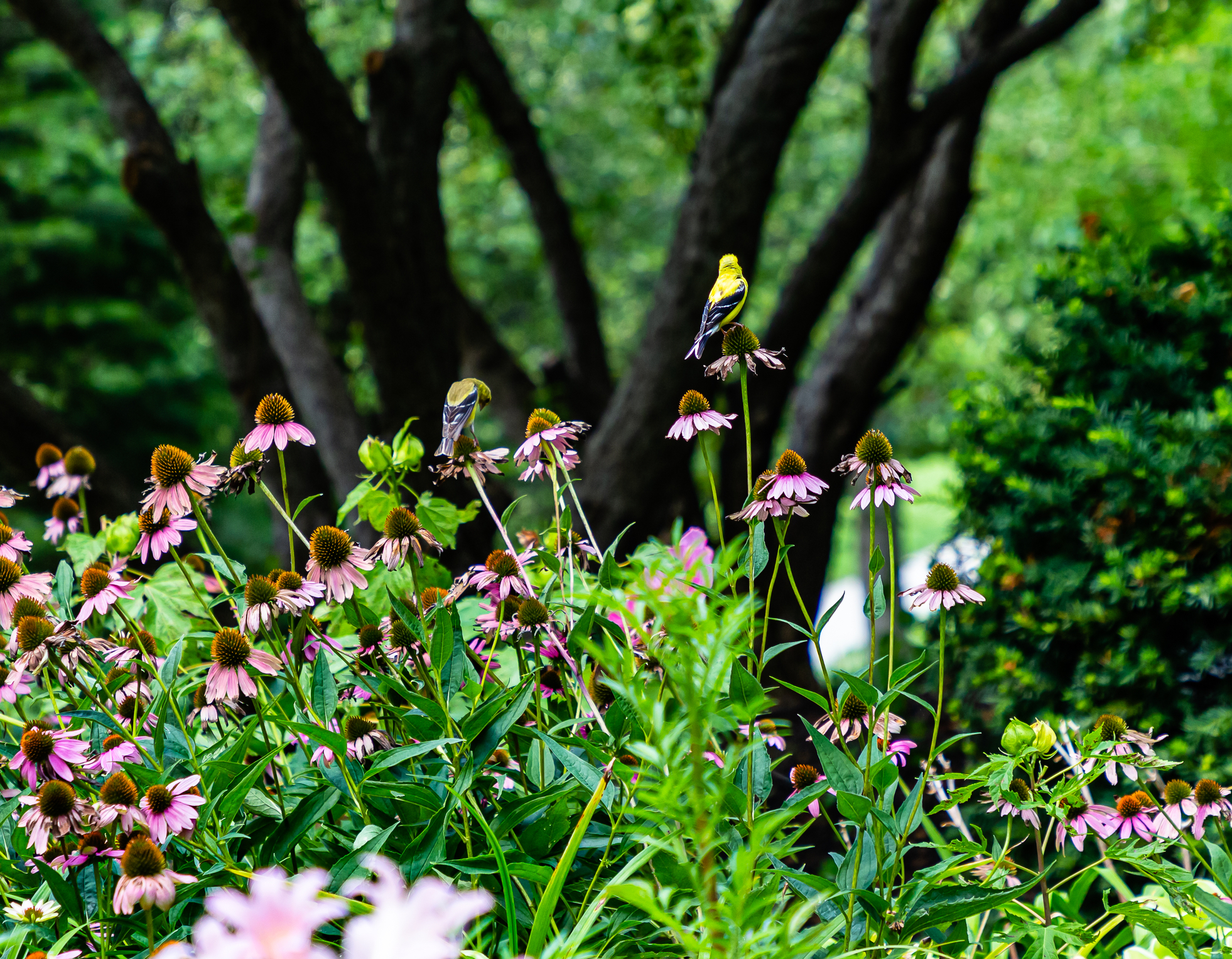
Diverse Plants for Birds
Plants that can help you draw more bird traffic to your garden include perennials, annuals, vegetables, herbs, and grasses. For instance, if you are going to perennials or ornamental grasses, the seed heads will attract fall ground-feeding birds while also supplying a cover as they forage on the ground. A few plants, their offerings, and what birds they attract are given below:
| Bird-Friendly Plants | Offering | Bird Species |
| Glossy Abelia | Nectar | Hummingbirds, sparrows, songbirds |
| Butterfly Bush | Nectar, Fruit, Protein | Hummingbirds, songbirds, sparrows |
| Burning Bush | Nectar, Fruit, Protein | Cardinals, brown thrashers, finches |
| Daylily | Nectar | Cardinals, robins, sparrows |
| Winterberry | Fruit | Brown thrushes, bluebirds, cedar waxwings |
| Honeysuckle | Nectar, Fruit | Wood thrushes, catbirds |
| Tea Viburnum | Nectar, Fruit, Protection | Purple finches, cedar waxwings |
| Firethorn | Nectar, Fruit, Protection | Cedar waxwings, mockingbirds, thrashers |
| Spirea | Nectar | Robins, warblers, wood thrushes |
| Forsythia | Nectar | Cardinals, sparrows, robins |
· Place Different Types of Feeders
If you are thinking about how to attract birds to your garden, you should consider placing different types of feeders in your garden. The feeder you want will depend on the bird species you want to attract. A few tips for selecting the suitable feeders to draw your favorite bird species include:
- Tube Feeders: If you love watching sparrows, finches, or chickadees in your landscape, tuber feeders are a great pick.
- Hopper Feeders: Placing these feeders in your backyard will draw a lot of cardinals, jays, sparrows, and finches.
- Suet Feeders: These feeders are an excellent pick for those wanting to attract nuthatches, starlings, and woodpeckers to their backyard.
- Ground Feeders: Bird species like blue jays, cardinals, and grosbeaks will surely appreciate ground feeders.
- Nectar Feeders: These feeders are an excellent option for attracting songbirds, hummingbirds, and orioles.
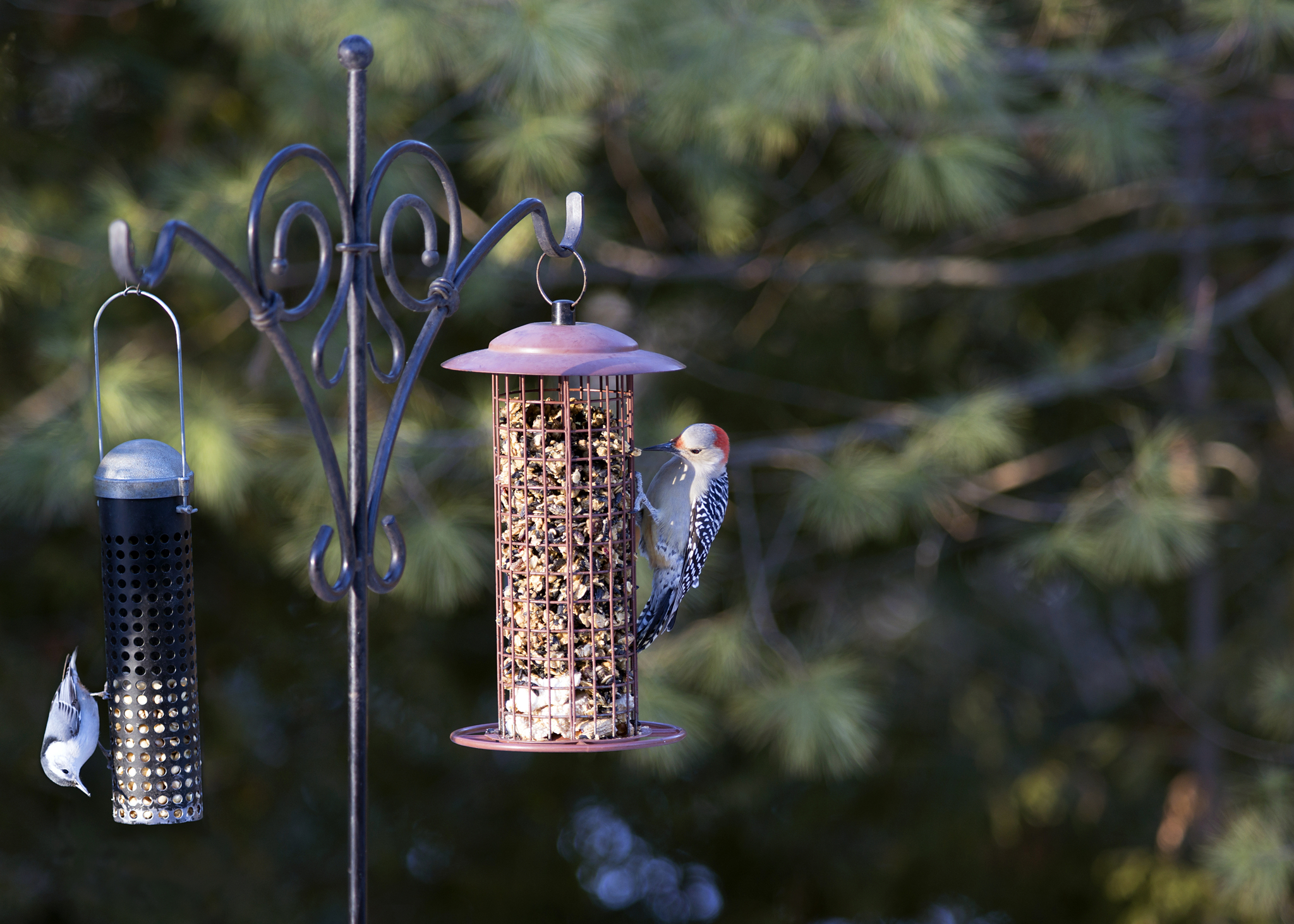
Bird Feeders
Keep in mind that different birds prefer different types of feeders at different heights. So you may want to try hanging your feeders higher or lower to see what’s working. Also, while placing feeders at lower heights can attract squirrels and other animals, you can choose squirrel-proof feeders to keep them safe.
· Choose the Right Food
While knowing how to attract birds to your yard, you will find that different species of birds prefer other foods. Like you might like sweets over salty, bird species also have varying nutritional needs. They prefer places where they find their preferred foods.
However, there are some foods that draw a multitude of bird traffic to your garden. For instance, suet and dark oil sunflower are the most suitable food choices that can attract a variety of colorful birds. Similarly, plenty of mixes are designed explicitly to attract different bird species.
Some popular food types for attracting birds to your garden include safflower, thistle, peanut butter, nuts, and mealworms. However, if you are unsure what food is suitable for your feeder, visit your local home and garden center to seek help.
· Incorporate Birdbaths
Incorporating birdbaths or a water source is crucial in learning how to attract birds to your garden. If you have a useful and easily accessible water source in your backyard, you can attract many bird species to your garden and enjoy watching them splashing in the water. Just as we enjoy our pool time during summer, birds also like to bathe and keep their feathers clean.

Bird Baths in the Garden
Adding a water source in your garden is even more essential as the birds constantly look for places where they can find clean water during hot temperatures. So, offering a shallow bird bath that should be a couple of inches deep or making a pond in your backyard will help birds stay clean and hydrated.
Moreover, since birds listen to the moving water, adding a mister for creating fresh, bubbling water can help attract a number of birds to your yard. However, if your area has cool temperatures, you may want to invest in a de-icer or heater to keep your bird bath from freezing. Remember that birds bathe year-round but often struggle to discover suitable water sources in the winter. So, incorporating a convenient, fresh water source in your garden will make it a desirable landscape.
· Add Plenty of Shelters
While greenery in your garden is an excellent option for creating shelters, some bird species, like chickadees, bluebirds, sparrows, etc., like warmth and safe birdhouses. You can place your birdhouse on a tree trunk to protect little feathered friends from ground predators.

Shelter for Birds
Moreover, when adding a birdhouse, remember that the entrance hole is large enough for your intended birds and small enough to prevent larger birds from getting inside it.
· Provide Nesting Opportunities
Once you know how to attract birds to your garden, you will need to find ways to make them keep coming back. In this regard, one of the smartest ways is to provide them with plenty of nesting opportunities in your garden. Creating a welcoming environment will encourage a stream of birds to build nests all year long.
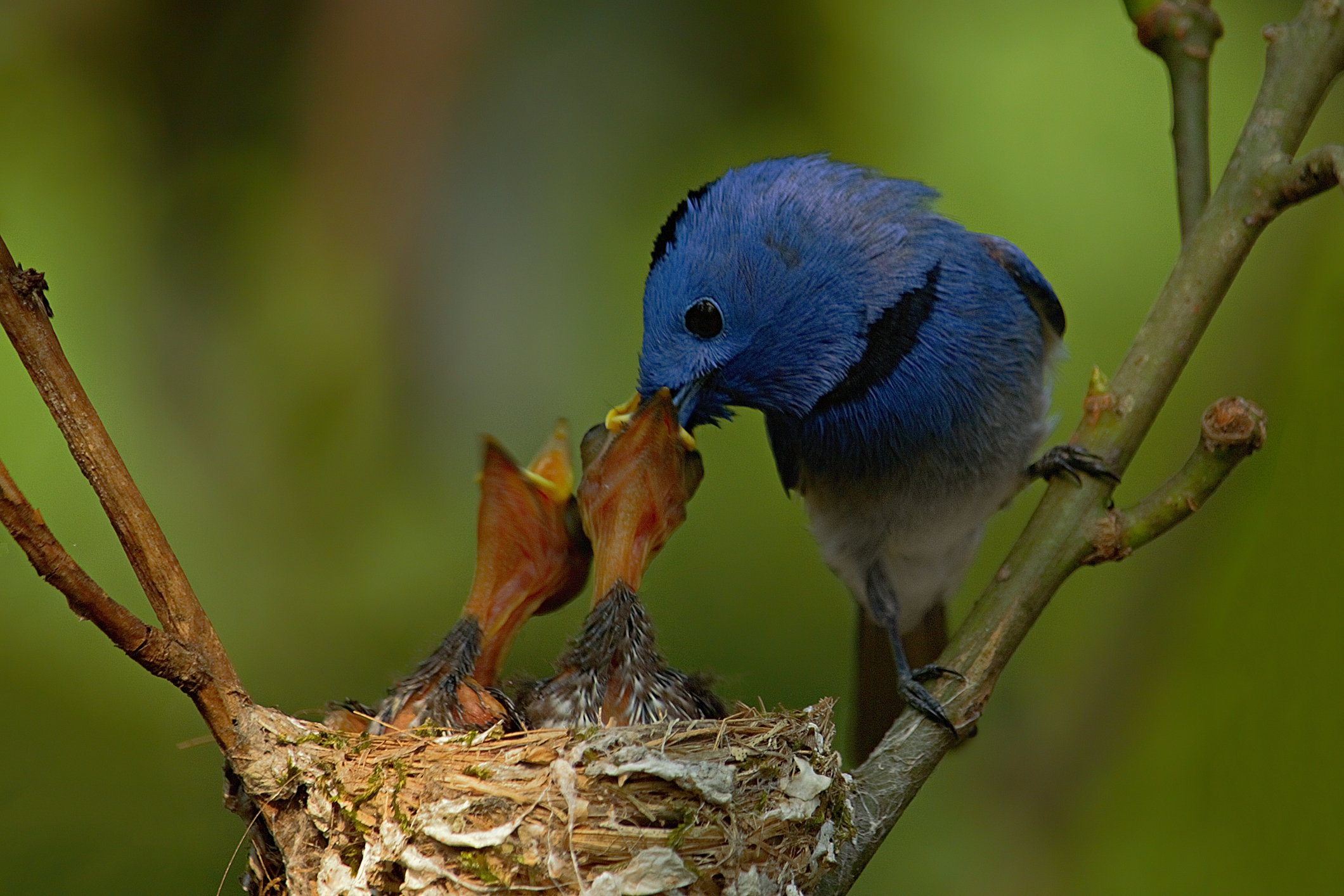
Backyard Bird Nesting
In addition to a welcoming environment full of shelter opportunities, food supplies, and bird-friendly plants, consider providing birds with safe and accessible nesting materials. For instance, you can use old feeders or an empty suet cage and fill it with small organic materials.
Moreover, dried weeds and leaves, grass clippings, etc., are all excellent materials for bird nest building. Additionally, since all these are organic, they will decompose naturally, reducing the risk of litter in your landscape.
· Avoid Fertilizers, Pesticides, and Herbicides
Using substances like fertilizers or pesticides in your garden to prevent insects poses a potential risk for little birds in your yard. These substances are also life-threatening for other wildlife living in your backyard. So, one of the ways to effectively and safely attract songbirds to your garden is to rely on biological controls for pests and keep weeds low by pulling when they are small before they go to seed.
Benefits of Attracting Birds to Your Garden
While attracting birds to your garden is an excellent idea for keeping your landscape vibrant and lively, these feathered friends also act as a natural pest control. Here are a few benefits of attracting birds to your garden:
· Birds Help Control Bugs
As a bird lover, you probably know that birds in your garden help you control bugs and other pests. They love dining on a variety of spiders, aphids, mosquitos, and other bugs that could otherwise be detrimental to your landscape.
If you manage to draw suitable species of birds to your yard, you can reduce the use of potentially dangerous pesticides, herbicides, and fertilizers. It means knowing the art of how to attract birds to your yard is a win-win all around.
· Birds Pollinate Flowers
In addition to being excellent pest killers, some bird species in your garden are excellent pollinators. It means if you have efficient pollinators, these little feathered friends will help you create a brand of new blooms.
Moreover, having more blooms in your garden also means you will be able to attract a multitude of songbirds and other bird species. What’s more, these blooms will also draw other excellent pollinator species like butterflies and bees to your garden.
· Birds Help with Weed Control
Another benefit of attracting birds to your garden is that they can help you control weeds. Plenty of bird species can be excellent for holding, containing, and preventing weeds by eating seeds before weeds could sprout up.
Avoid using herbicides if you struggle to control weeds in your garden. Instead, try to attract birds like towhees, sparrows, and finches. Remember that if you don’t pay attention to weeding, these troublesome plants can spread quickly, wrecking a well-maintained garden.
What Birds Should You Attract to Your Garden?
Knowing all these benefits of attracting birds doesn’t mean all these birds are beneficial for your garden. Keep in mind that some bird species can be pretty harmful to average gardens and their resources. They love eating seeds, sunflowers, corn, peppers, tomatoes, and lettuce. Moreover, they are also a potential threat to smaller birds.
While it is crucial to master the art of how to attract birds to your garden, you should also know what birds to attract and what to deter.
1. Blue Birds
Bluebirds are one of the most colorful and elegant bird species that every owner would love to attract to their garden. These little birds are incredibly desirable because of their stunning plumage and lilting voice. Besides their beauty, bluebirds also benefit the garden by eating harmful insects and pests.

Bluebird in the Garden
Since these bird species are insectivorous, they love to dine on weevils, beetles, grasshoppers, caterpillars, and other insects in your garden. So, attracting these birds to your garden means you will benefit from natural pest control rather than using costly pest controls with added chemicals.
| Preferred Feeder | Preferred Plants | Preferred Food |
| Jail Feeder to | Red raspberry, American elderberry, northern bayberry, Virginia creeper | Softened fruits, mealworms, suet, cornmeal muffins, sunflower hearts |
2. Wrens
You will love watching energetic, perky pranks of wrens in your garden for hours. Watching them catch a variety of unwanted insects is even more fun. Since wrens prefer foraging close to the ground, they will help you eliminate caterpillars, beetles, and grubs and happily dine on snails and ants.

Wren in the Garden
So, attracting a multitude of wrens to your garden means you will save costs on pesticides, herbicides, and fertilizers with added chemicals to keep your garden green. Wrens are natural insect killers and can also be good pollinators.
| Preferred Feeder | Preferred Plants | Preferred Food |
| Peanut Feeder | Burning bush, cholla cactus, broccoli, strawberry, serviceberry, autumn-blooming clematis | Mealworms, bark butter, peanut pieces, sunflower chips, suet blends |
3. Chickadees
Chickadees are among the bird species that are easy to attract to most gardens. These little birds are also voracious insect-eaters and love to dine on unwanted insects, such as caterpillars and beetles. Additionally, these birds feature larger broods; they can quickly hunt hundreds of insects for their young chicks.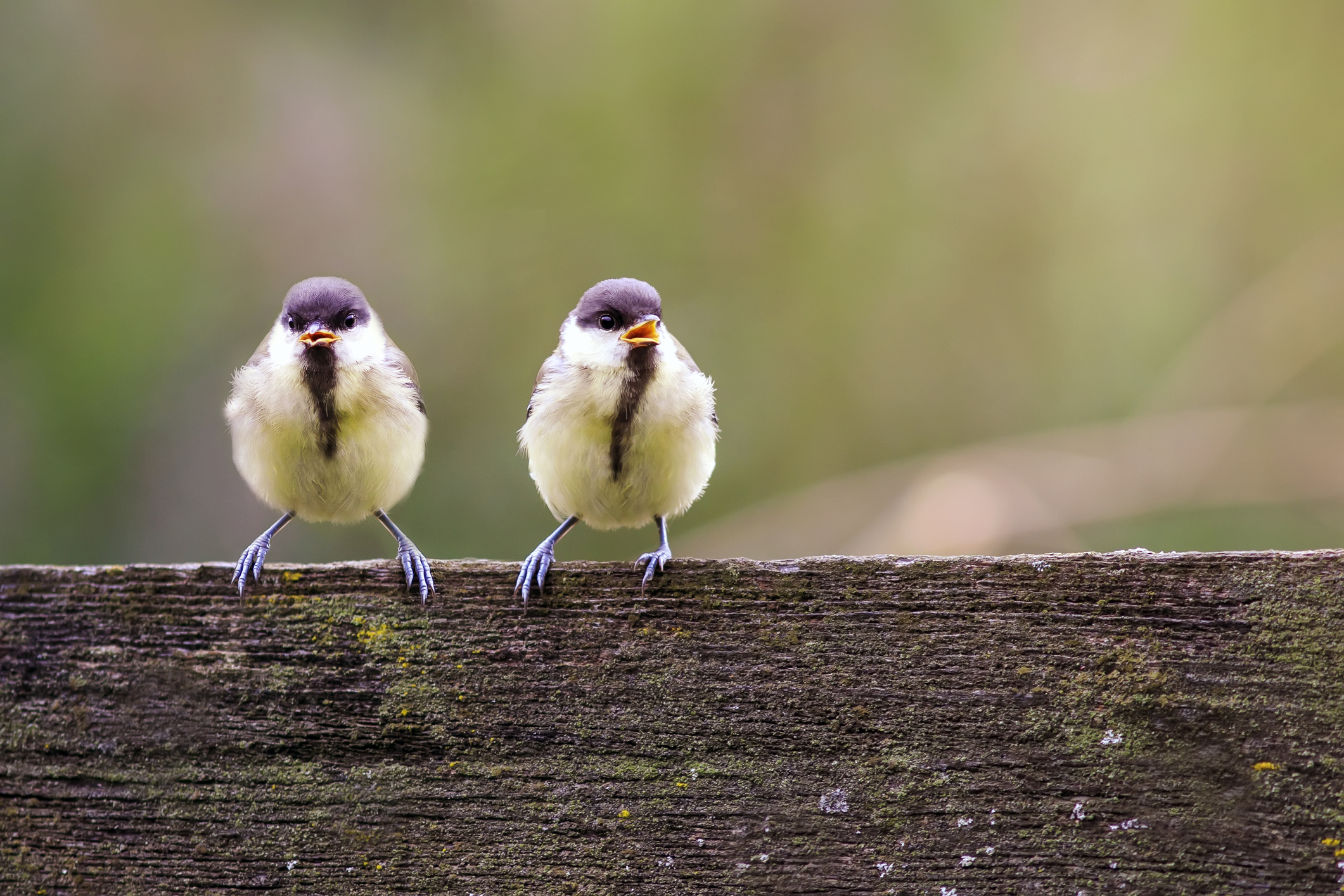
Moreover, these birds prefer gardens with safe nesting opportunities. One nest of chickadees usually has 6-8 eggs. So, if you draw chickadees to your garden and let them nest there, you won’t need to buy or use any fertilizers or insecticides.
| Preferred Feeder | Preferred Plants | Preferred Food |
| Hopper or House feeders | Native oaks, birches, maples, poplars, cherries, hickories, and alders | Seeds, invertebrates, berries, insects |
4. Wood Peckers
If you live in an area where wood-boring insects are a common headache, consider attracting woodpeckers to your yard. These birds only drill into barks to hunt aphids, beetles, millipedes, and other unwanted insects. Woodpeckers are tenacious birds and won’t stop until they catch every morsel.
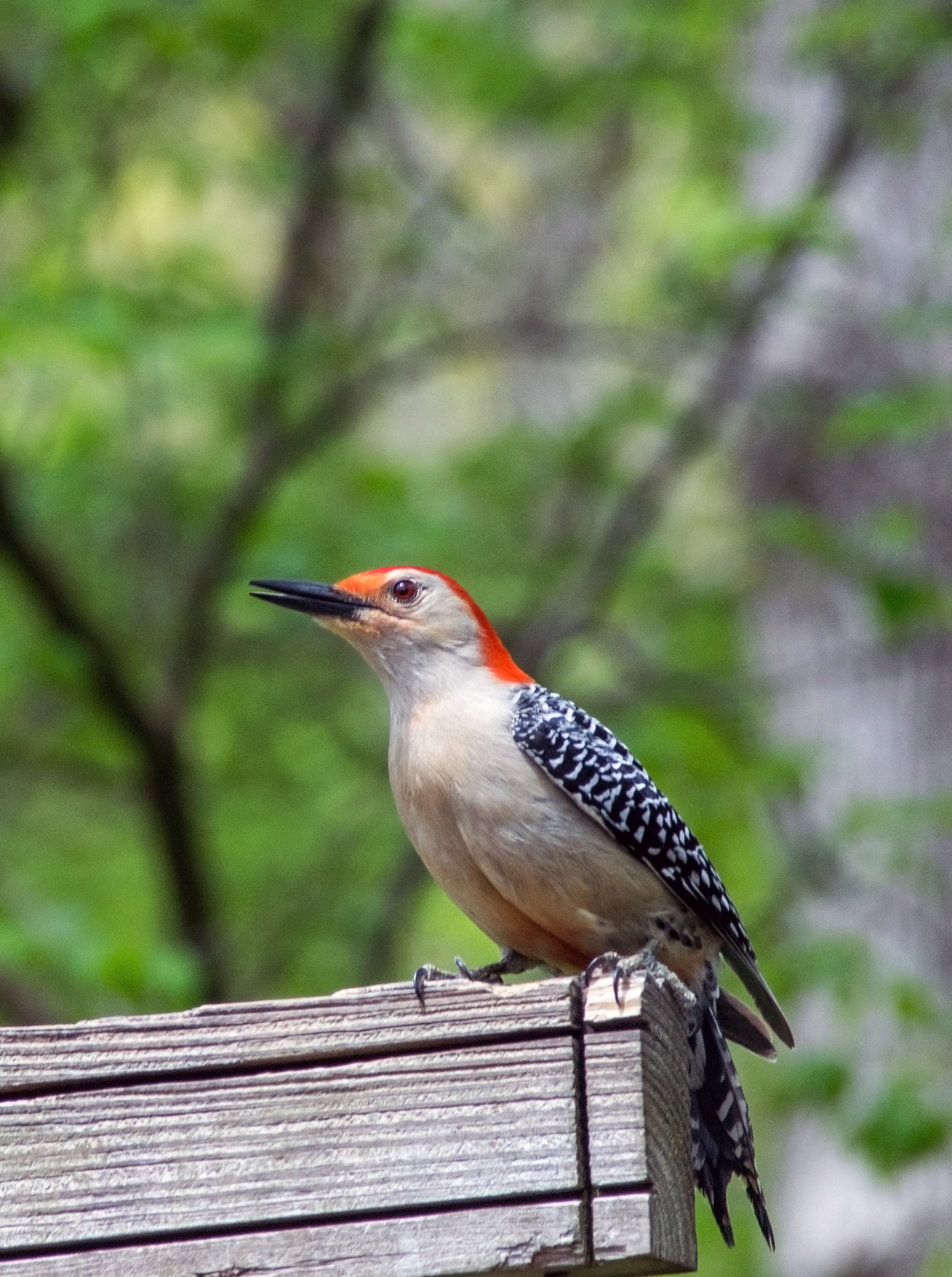
Woodpecker in the garden
Although attracting woodpeckers to your garden is simple, some homeowners might need to find ways to keep them from pecking where these birds aren’t as welcome.
| Preferred Feeder | Preferred Plants | Preferred Food |
| Tail Prop Suet Feeders | Hickories, pines, oaks, cherries | Suet, suet blends, peanuts, bark butter, mealworms, cracked corns |
5. Nuthatches
If your garden has trees, attracting nuthatches to your garden should be an easy task for you. These birds are tree-creeping and can be excellent for protecting your trees and orchids. That’s because nuthatches usually forage along the tree trunk to hunt ants, beetles, moth eggs, and caterpillars.
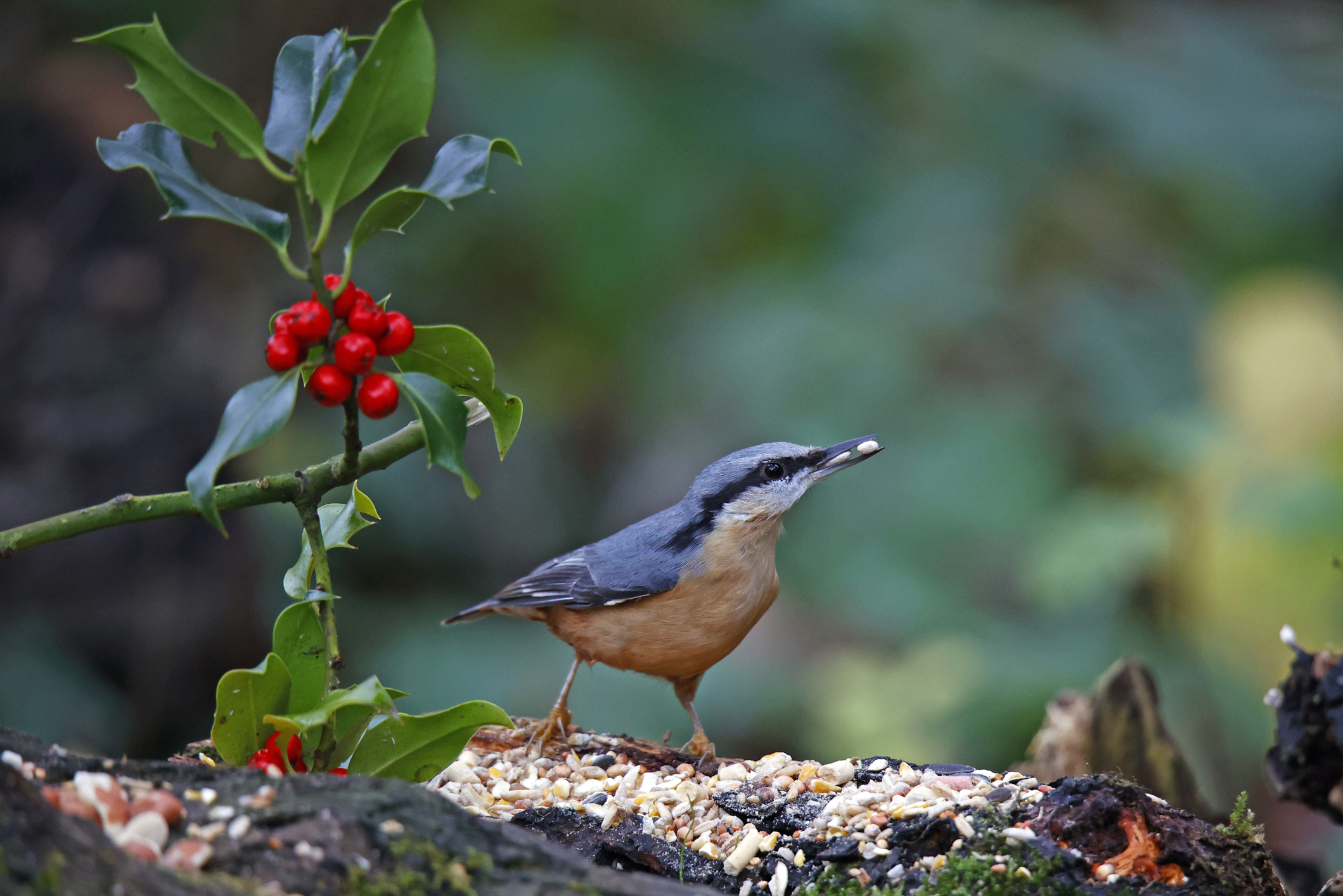
Nuthatches in the Garden
Moreover, when it comes to feeders, these birds prefer gardens that have suet feeders. They also like snacking on black oil sunflower seeds, making it easy to invite more of them. While they are in your yard, you will witness a significant decrease in the insect population.
| Preferred Feeder | Preferred Plants | Preferred Food |
| Open platforms, Hopper feeder | Alder, blue spruce, eucalyptus, acorn, oak, cedar | Insects, seeds, peanut butter, suet |
6. Hummingbirds
If you are struggling with pollination and blooms in your garden, try attracting hummingbirds. These beautiful birds are essential for excellent pollination and more abundant blooms. Additionally, hummingbirds are also vital for productive harvesting in vegetable gardens.
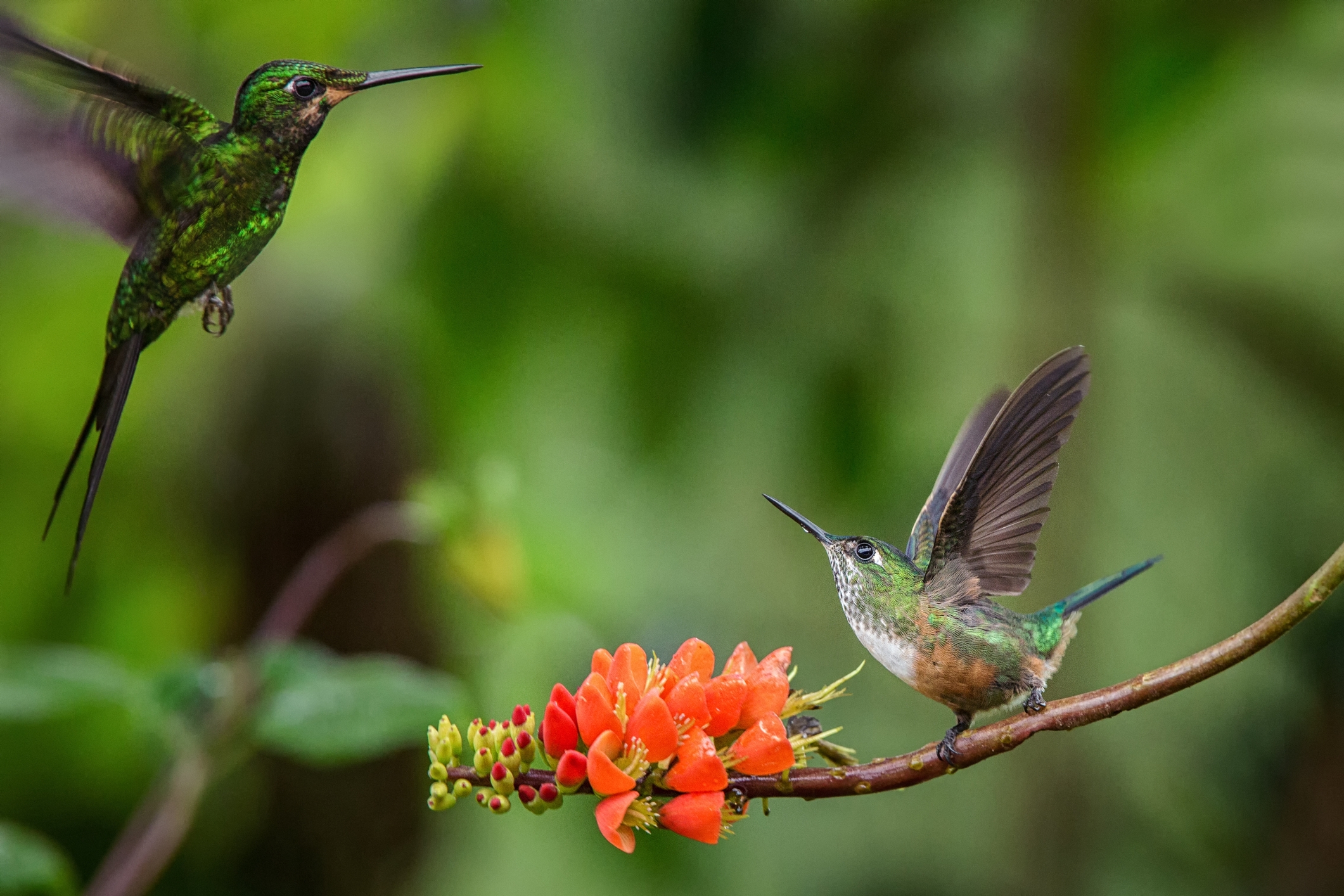
how to attract birds to your garden
However, attracting hummingbirds to your garden means you will have to plant more flowering plants with nectar in the garden. These tiny birds love to feast on natural nectar while also helping pollinate all kinds of beautiful plants.
In addition to pollination, attracting hummingbirds to your garden is also beneficial for keeping gnats and other unwanted insects population down.
| Preferred Feeder | Preferred Plants | Preferred Food |
| Saucer feeders | Flowering plants, daylilies, bee balms, red columbine, blue lupine | Fruit juices, insects, tree sap, pollen |
7. Tanagers
Learning the art of how to attract birds to your garden is even more essential if stinging insects in your yard are a problem. Tanagers like summer, western, and scarlet tanagers are among the most colorful and beautiful little birds you can attract to your garden and eliminate unwanted insects.
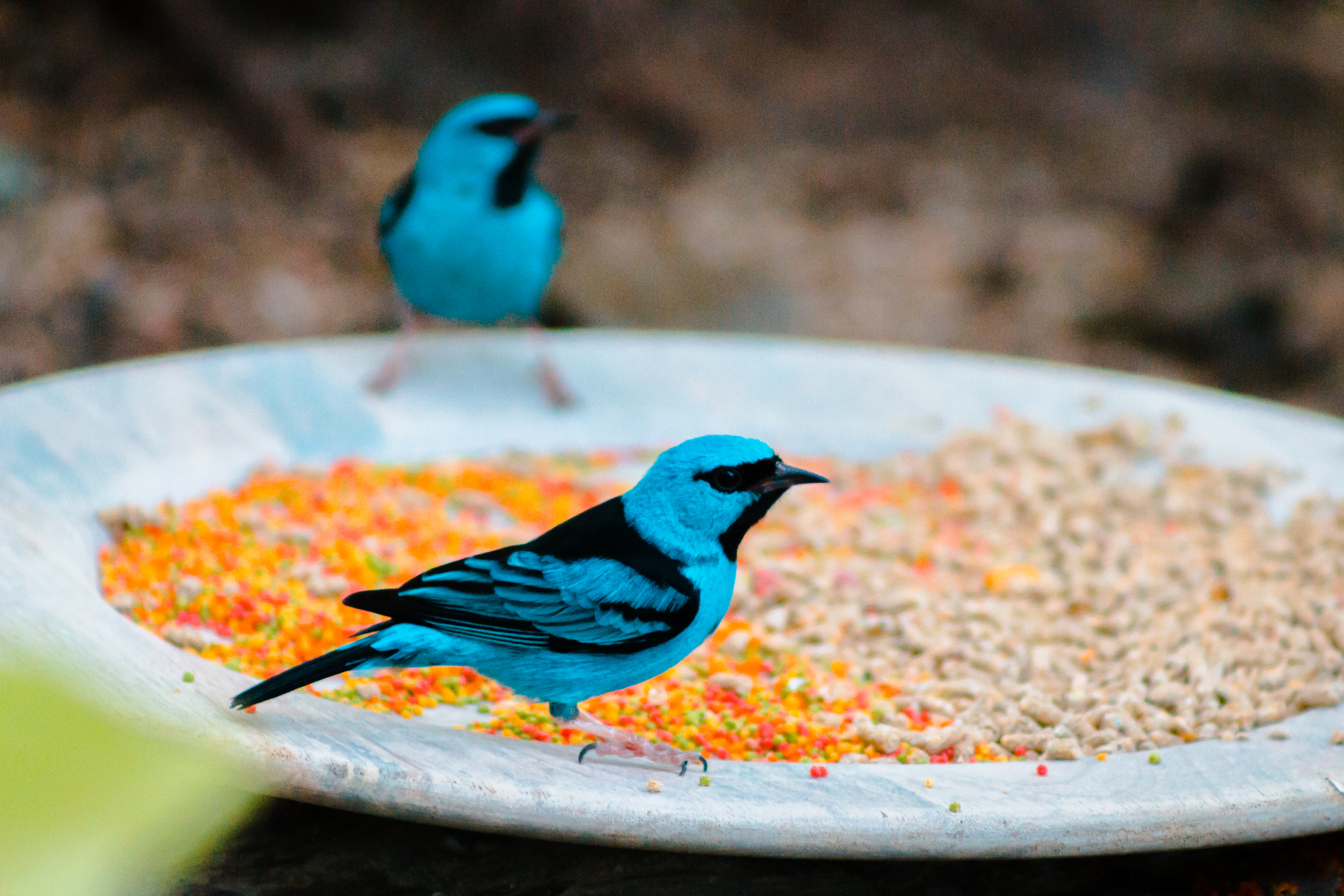
how to attract birds to your garden
Since wasp-eating bird species, tanagers can effectively eliminate dangerous stingers before they dine on different insects. The best time to attract tanagers to your garden is all summer when wasps and hornets are at their peak.
| Preferred Feeder | Preferred Plants | Preferred Food |
| Hanging platform feeders | Cherry, plum trees, coneflower, cardinal flower, holly | Mealworms, grape jelly, oranges, suet |
8. Purple Martins
Purple martins are one of the most attractive swallows. Unlike other birds mentioned above, these birds feed on aerial insects, such as flies, moths, and mosquitoes. However, attracting purple martins to your yard can be challenging, mainly because of their specialized needs.

how to attract birds to your garden
That said, attracting other swallows like barn swallows should be easy; they also eat more flying insects.
| Preferred Feeder | Preferred Plants | Preferred Food |
| None | American holly, cedar elm, tulip poplar, Norway spruce, chokecherry | Butterflies, crane flies, moths |
9. Goldfinches
If you are struggling to keep your garden from weeds, attracting goldfinches can be an excellent solution to get rid of weeds. They are seed-loving birds and happily dine on weed seeds and pluck seeds while also foraging closer to the ground to pick fallen seeds.

how to attract birds to your garden
Both American goldfinches and lesser goldfinches eat a significant number of seeds. So the more of these birds you attract to your garden, the fewer weeds you will have.
| Preferred Feeder | Preferred Plants | Preferred Food |
| Nyjer feeder | Grasses, weedy plants | Sunflower seeds, thistle |
10. Hawks
While it can be staggering to see birds like hawks in your backyard, these raptors are great for getting rid of dangerous wildlife like snakes and giant insects. However, attracting hawks to your garden can be challenging, and they can prevent other tiny birds from coming to your yard.

how to attract birds to your garden
While several hawks can become frequent visitors, finding ways and taking steps to protect other birds from hawks is essential. If your yard hosts hawks, ensure to keep your tiny feathered friends protected by providing them safe shelters.
| Preferred Feeder | Preferred Plants | Preferred Food |
| None | Crabapple, serviceberries, dogwood | Squirrels, prairie, mice, snakes |
What Bird Should You Deter?
Here are a few least wanted garden birds:
1. House Sparrow
Even though the house sparrow is declining in the native Eurasian range, these birds are invasive in many regions. It is one of the least wanted backyard birds, mainly because of its aggressive nature. House sparrows are pretty territorial birds and can even kill other birds in your garden in order to usurp their nesting.

House sparrow
One of the effective ways to deter house sparrows is to place proper bird houses’ entrance holes in your garden. Moreover, avoid open area feeding to discourage house sparrows from visiting your yard.
2. European Starling
While mastering the art of how to attract birds to your garden is essential, you should also know how to deter unwanted birds. Bird species like European starling often gather in flocks and create unpleasant noise. When they are in your backyard, European starlings can empty the feeding areas in no time, leaving nothing for your favorite birds to enjoy.
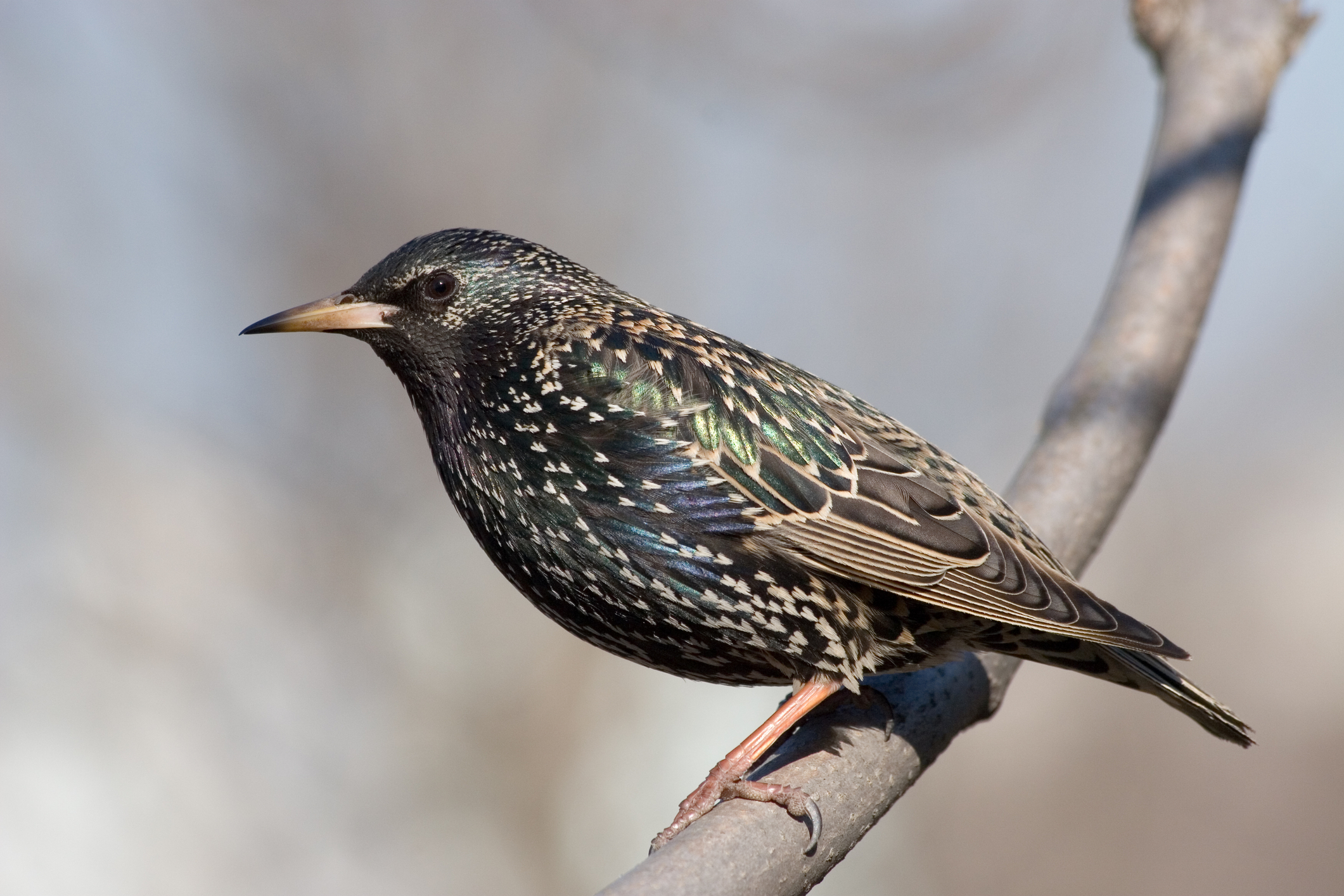
european starling
While these birds are invasive in North America, you can deter them from bird feeders using caged feeders. Also, blocking nesting opportunities can keep European starlings away from your landscape.
3. Common Grackle
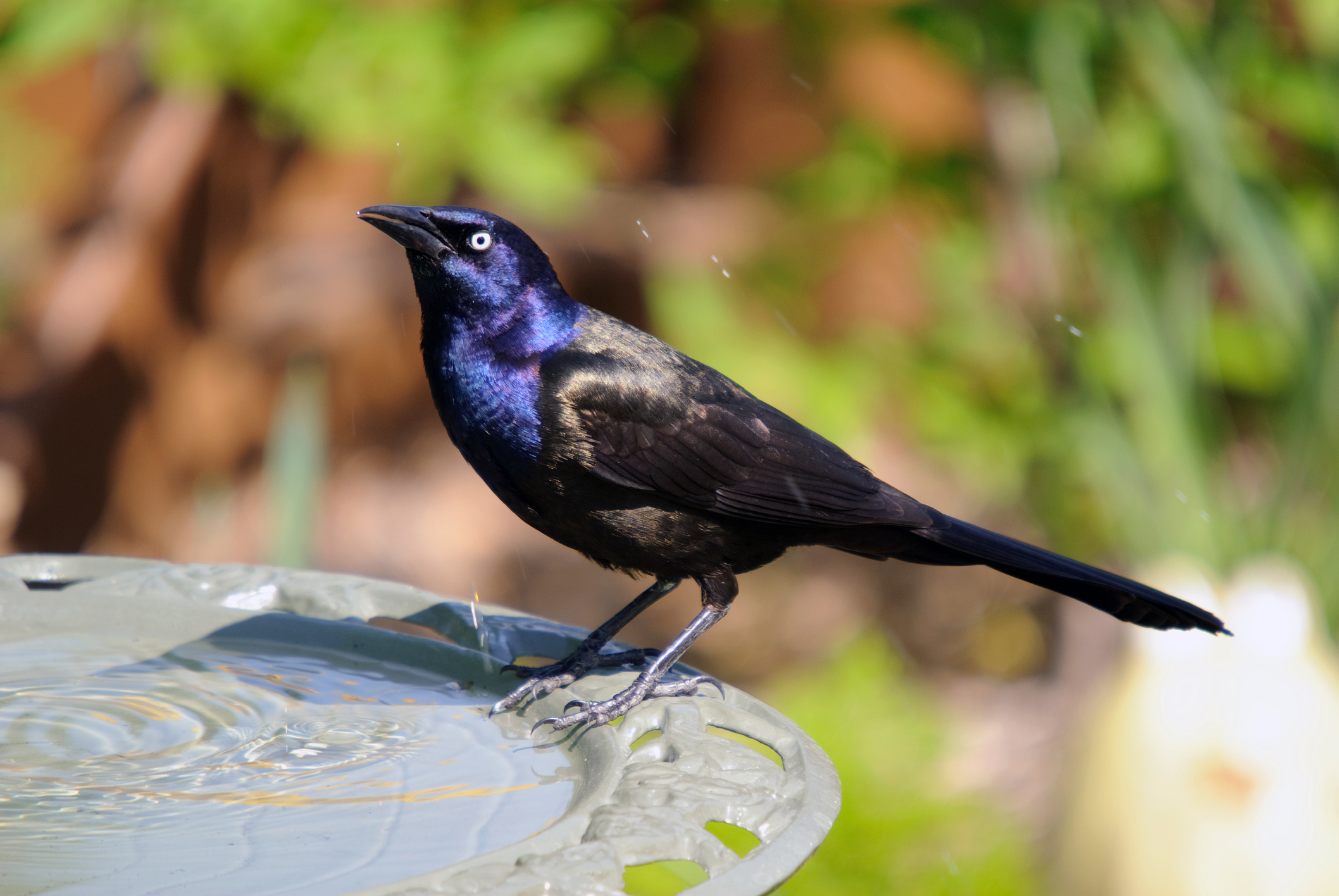
common grackle
These bird species are gregarious with pretty voracious appetites. In rural areas, common grackles often destroy crops. Since they travel in large flocks, these birds can create quite a nuisance. So, an effective way to deter common grackles is eradicating ground feeding areas. Moreover, since they like bird seeds, you can offer other foods to discourage them.
4. Brown-Headed Cowbird
Despite their glossy plumage that you may find pretty attractive, brown-headed cowbirds’ brood parasite nature makes them less attractive to many gardeners. These birds often deposit their eggs in other bird’s nesting areas, leaving foster parents to ignore their hatchlings and care for brown-headed cowbird adopted chicks.
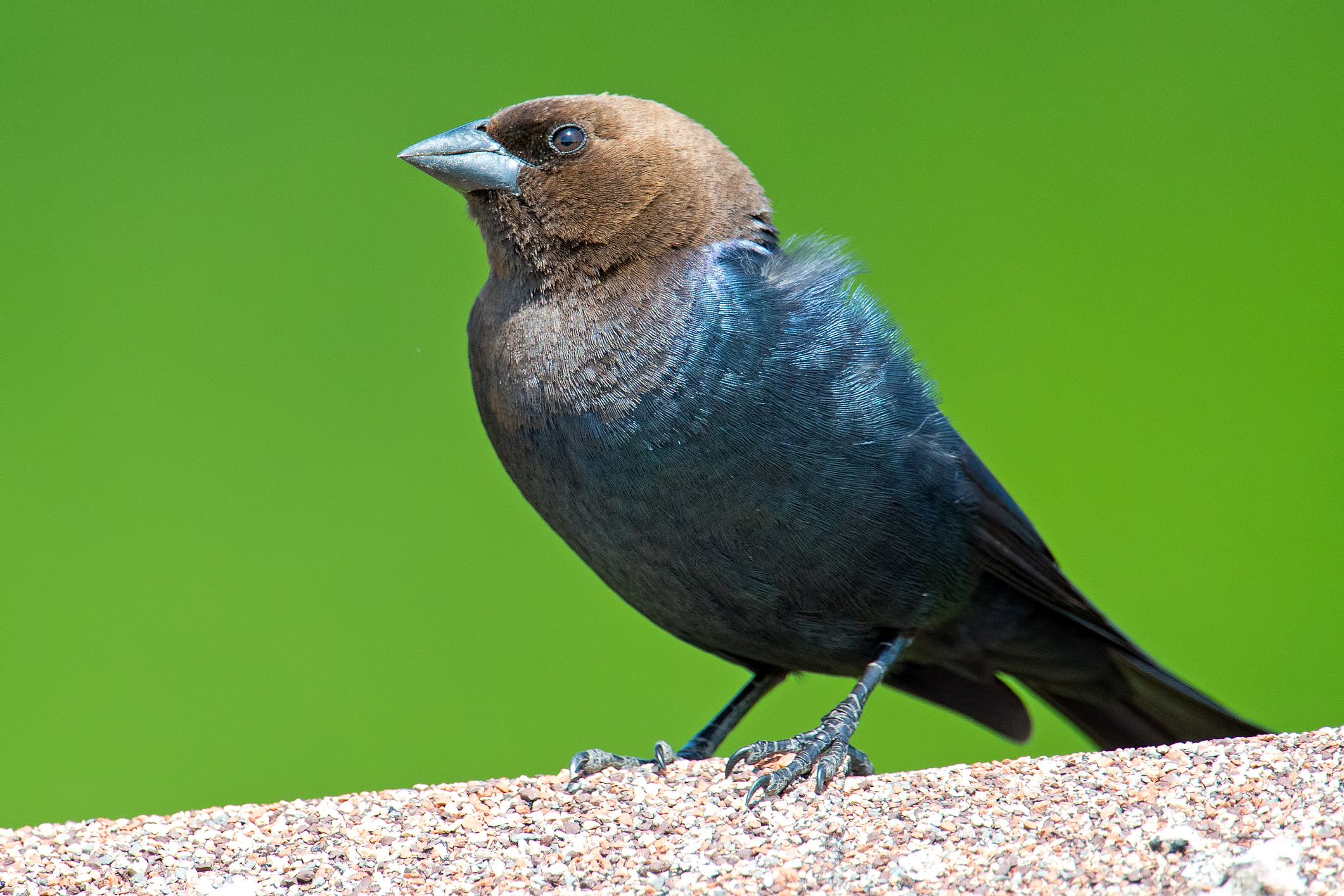
brown headed cowbird
You can deter these birds by offering food except cracked corn. Moreover, providing lower-quality birdseed can also be helpful for keeping these birds from your backyard.
5. Rock Pigeons
Rock pigeon bird species are also considered invasive in many regions. They also travel in large flocks and can be aggressive and pretty demanding. While attracting birds to your garden makes the landscape more beautiful, you should discourage rock pigeons from visiting your yard.

Rock pigeon
In this regard, you can choose bird feeders that should have smaller perches. Additionally, do not offer mixed birdseed to discourage rock pigeons. Using pigeon deterrent techniques like spikes on gutters and fences is also a smart way to keep rock pigeons from your landscape.
Wrapping Up
That is all about how to attract birds to your yard. While attracting birds to your garden makes a vibrant, lively landscape, there are a few bird species that you should deter. Desirable bird species, such as goldfinches, chickadees, hummingbirds, etc., are excellent for pollinating and vanishing unwanted insects. However, birds like house sparrows, crows, and common grackles can be pretty territorial, pretty demanding, and can cause harm to your veggies and fruits. That said while learning how to attract birds to your garden helps you make your landscape beautiful, knowing how to deter unwanted is equally essential. We hope this post will help you attract a multitude of colorful birds to your yard.
